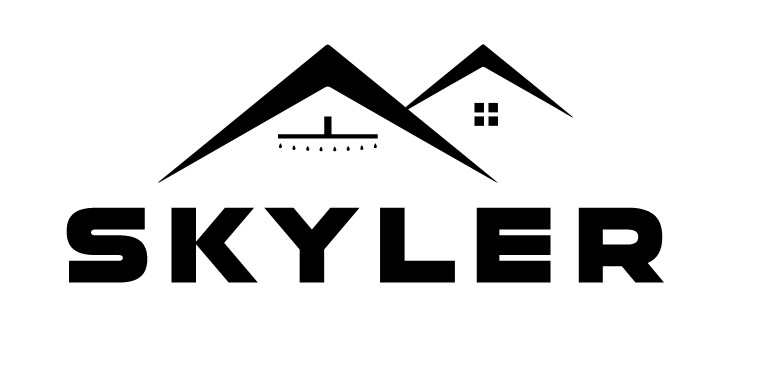Bookkeeping
Cost Accounting: Principles You Need to Know IBN Finance and Accounting
Because assets are an essential part of business, it is important that their value is recorded who issues a bill of lading here are the responsible parties and reported accurately. The cost principle states that costis recorded at the price actually paid for an item. For example, when a retailer purchases inventory from a vendor, it records the purchase at the cash price that was actually paid. However, as with anything, there are some drawbacks to consider when using the cost principle in your financial reporting.
What are the other principles of GAAP?
The IRS outlines depreciation schedules for taxpayer use, and a trained accountant can also implement them. Any depreciation of assets creates recurring tax benefits for business, as depreciation can be offset against the business’s income. The cost principle is an important part of financial reporting, as it encompasses the value of a business asset. By recording the cash value of an asset when it is acquired, you’ll understand its fixed value rather than mapping its worth over conversion cost definition formula example time. Although the cost principle requires you to record the original acquisition cost of your assets, you will still need to factor in something called depreciation for certain assets.
Examples of Cost Principle in Accounting
Yet cost accounting requires they continue to value that asset at the price they paid for it, less any depreciation. As what is the procedure for preparing a trial balance with anything, there are exceptions to the cost principle. Liquid assets, like debt or equity investments, are exempt from the cost principle.
It is a principle that governs the recording of assets in financial statements, and it is essential for businesses of all sizes to understand and apply it correctly. From the perspective of investors and creditors, the cost principle provides a measure of accountability and transparency for the company’s financial performance. By recording assets at their original purchase price, investors and creditors can assess the company’s financial position and profitability with greater accuracy. Furthermore, this principle can help prevent companies from overvaluing their assets and inflating their financial statements, which can lead to fraudulent practices and financial instability. For example, if a company owns a building that has significantly increased in value since it was purchased, the fair value principle would require it to be recorded at its current market value. However, if the company plans to hold onto the building for many years, this may not accurately reflect its true value to the company.
Understanding Cash Management Effective cash management is crucial for any business, regardless… Investor due diligence and risk assessment are critical components of the investment process,… Shaun Conrad is a Certified Public Accountant and CPA exam expert with a passion for teaching. After almost a decade of experience in public accounting, he created MyAccountingCourse.com to help people learn accounting & finance, pass the CPA exam, and start their career. Here’s everything you should know about the cost principle, as well as how to use it for your business.
Asset Depreciation
The Cost Principle is a fundamental accounting concept that is the backbone of financial reporting. The principle states that assets must be recorded at their original cost, as opposed to their current fair market value. The Cost Principle is based on the idea that the original cost of an asset is the most objective and verifiable measure of its value. This principle is important because it helps to ensure that financial statements are accurate, reliable, and consistent over time. The cost principle in accounting is a critical convention that ensures financial statements are accurate, reliable, and transparent.
Americans: Plan Ahead this Tax Season With These New Changes
By adjusting the value of assets to reflect their market price, fair value accounting offers a dynamic and timely perspective on a company’s financial position. This approach can be particularly useful in volatile markets where asset values fluctuate frequently. For instance, investment portfolios and real estate holdings can benefit from fair value adjustments, providing stakeholders with a clearer picture of the company’s current financial health. The cost principle is an essential accounting principle that helps businesses maintain accurate financial records and provides investors with reliable financial information. While the cost principle has some limitations, it remains a widely accepted accounting convention and is critical for the financial reporting of businesses worldwide. Over time, the value of assets can fluctuate significantly due to market conditions, technological advancements, or wear and tear.
- In this case, the company would record the cost of the new vehicle as the amount paid in cash plus the cash value of the trade-in vehicle.
- The useful life of the machine is limited to ten years, and its fair value depreciates annually.
- The Cost Principle is based on the idea that the original cost of an asset is the most objective and verifiable measure of its value.
- If an asset is inherited, it will act like a liquid asset, or an intangible asset.
- The cost principle can be a helpful tool when it comes to financial reporting within your business.
- While some argue that it is outdated and no longer provides relevant information to investors, others argue that it is still a useful benchmark for measuring a company’s financial performance.
We are committed to providing trustworthy advice for businesses. Learn more about our full process and see who our partners are here. Business News Daily provides resources, advice and product reviews to drive business growth.
📆 Date: May 3-4, 2025🕛 Time: 8:30-11:30 AM EST📍 Venue: OnlineInstructor: Dheeraj Vaidya, CFA, FRM
Our mission is to equip business owners with the knowledge and confidence to make informed decisions. As part of that, we recommend products and services for their success. The first cost principle accounting example is the Google acquisition of YouTube. In 2006, Google bought YouTube for $1.65 billion as one of the most significant tech acquisitions. As per Cost Principle in the book of Google, the value of YouTube will be shown as $1.65 billion.
Contract Terms – The cost must comply with specific contract provisions, which may impose additional restrictions beyond the FAR cost principles. This article is not intended to provide tax, legal, or investment advice, and BooksTime does not provide any services in these areas. This material has been prepared for informational purposes only, and should not be relied upon for tax, legal, or investment purposes. The information presented here may be incomplete or out of date. BooksTime is not responsible for your compliance or noncompliance with any laws or regulations. In Feb 2015, Infosys bought two companies, ‘Panaya’ and ‘Skava,’ for USD 340 million.
It is important for companies to consider these limitations and criticisms when valuing their assets. Despite its advantages, fair value accounting is not without challenges. Determining the fair value of an asset often involves a degree of estimation and judgment, which can introduce subjectivity into the financial statements. This subjectivity can lead to inconsistencies and potential manipulation, as different accountants might arrive at different valuations for the same asset. Moreover, fair value adjustments can introduce volatility into financial statements, making it harder for stakeholders to assess long-term trends and stability.
Short-Term vs Long-Term Assets
Current assets aren’t affected very much by the cost principle. They don’t have the opportunity to gain value like long-term assets do. Some long-term assets that need to fall under the cost principle are heavy machinery and equipment.
- This means that the historical cost principle must be used to maintain compliance in accounting in Canada.
- This principle requires that assets be listed at their original purchase price rather than their current market value.
- This is avoided in depreciation, because the amount of depreciation can be listed equally on the balance sheet.
- For example, companies could be required to provide additional disclosures about the market value of their assets.
- This is due to a handful of significant disadvantages that come with the cost principle.
- The cost principle requires you to initially record an asset, liability, or equity investment at its original acquisition cost.
In these cases, investors may be more interested in a company’s market value than its book value. In practice, the cost principle aids in budgeting and forecasting by offering a stable reference point. For instance, when planning for capital expenditures, companies can rely on historical cost data to estimate future investment needs and allocate resources effectively.
I know that asset appreciation doesn’t show up using the cost principle. Should depreciation still be recorded?
Then based on accounting principles, this company’s value can be impaired based on the current value. Cost Principle states that an asset should always be recorded at the original buying price or cost and not the perceived value. Therefore, any changes in the asset’s market value should not affect how they are represented on the balance sheet.
However, exceptions exist, particularly in commercial contracts, where FAR cost principles generally do not apply. Contractors must first determine if their contract falls under FAR Part 31 before applying these rules. The current value, thus, can be calculated in two ways, and, accordingly, you can get two completely different values.



